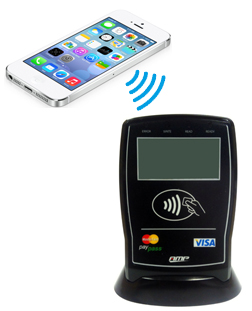 The current excitement about the fact that the iPhone 6 will likely be NFC-enabled, that Apple is testing an NFC-capable POS system based on the iPhone 5S in their own stores, and that the company is now putting its money on NFC, is obviously reason for a lot of talk and speculations. But the actual dimension of Apple's recent decisions and the likely implications for the next generation of payment becomes apparent only in the overall context of things.
The current excitement about the fact that the iPhone 6 will likely be NFC-enabled, that Apple is testing an NFC-capable POS system based on the iPhone 5S in their own stores, and that the company is now putting its money on NFC, is obviously reason for a lot of talk and speculations. But the actual dimension of Apple's recent decisions and the likely implications for the next generation of payment becomes apparent only in the overall context of things.
The partnership between Apple with the only credit card organization in China is crucial, as that way the world's largest mobile payment ecosystem could legally develop: Union Pay, among others, is used by the Chinese banks as an interbank network connecting the ATMs of 14 Chinese banks.
Thus, the partnership and the relationship to the largest mobile operator, China Mobile, is a brilliant move on the part of Apple to play a more important role in this ecosystem: As device manufacturers, as part of the Trusted Service Manager (TSM), and as an innovator of a Chinese wallet based on different radio technologies such as NFC or BLE/iBeacons.But there are many indications that the NFC decision by Apple was anticipated by the market - which means the innovative Asian growth market, the Chinese regulation by the People Bank of China (PBOC), the emerging state-funded NFC-based mobile payment platform of Chinese banks, including China Mobile (for short: the Apple customers China Mobile and Union Pay).
It’s a fact that payments via smart cards or mobile devices are by now widespread in Asia, especially due to FeliCa (short for Felicity Card) technology – which is similar to NFC -for payment processing and other value-added services. Given the huge Chinese/Asian market with its enormous growth potential for NFC mobile payments (China holds currently only 0.8 % of the market) the decision for Apple’s billion dollar question was easy to make: Apple integrates NFC into their popular devices in the Asian market – becoming provider, TSM and innovator of a wallet - and adds to their portfolio approximately 600 million credit card users which are currently Chinese credit card customers of Union Pay. The well-known innovator of solution could therefore develop considerable momentum with a NFC-enabled iPhone that way.
By Daniela La Marca


